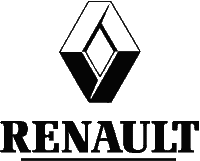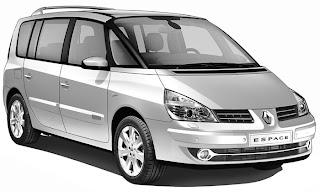CAR AUTO ONLINE | Renault | Renault is a French automobile manufacturer producing cars and vans, and in the past, autorail vehicles, trucks, tractors, and also buses. Renault brothers Marcel and Fernand founded the leading French car manufacturer in 1899. The first cars of Renault designed by their brother, Louis began winning road races from 1899 onwards, due to public demand for the development of the company cars. Renault soon developed a network of sales, and in 1905, was transferred to a boat of the industrial production of cars to meet large orders for taxis in Paris and New York.
France had surpassed the United States of America, the leading producer of impact on the philosophy supported by the introduction of the Ford assembly line in motion, and prices available without interruption of the war, has seen a big change. Both Renault and Citroen have tried to learn American methods, the way the Citroën. In 1920, Renault has expanded the production line for trucks and tractors.
The company also built a large factory at Billancourt near Paris in order, like Ford at his Baton Rouge complex in Michigan in the USA, to control as many aspects of car production—from raw materials to component parts—within a single company. Assembly lines were introduced at Renault and the factory completed in 1937. Renault automobile designs followed fairly conventional lines until the later 1920s when external consultants Hibbard & Darrin were brought in for the Reinastella range of 1928.
In common with other manufacturers in Europe and the United States, streamlined forms also made their impact on the Renault range in the 1930s, as seen in the Viva Grand Sport of 1934 designed by Marcel Riffart. Three years later Renault launched its first attempt at a people's car, the streamlined Juvaquatre, affordable and with hydraulic brakes. Nonetheless, technological imperative rather than style generally informed the outlook of Renault's body design department, directed by Roger Barthaud.
In 1946, Renault launched its 4CV, a symbol of mass motoring in France, with the popular Dauphine following a decade later, with the rather box-like, functional Renault 4 of 1961 providing a design response to the Suez crisis.
During the 1950s Renault had begun working with the Italian automobile body design company Ghia and also set up a centre for styling. In charge of this from 1960 to 1963 was Philippe Charbonneaux, who came from a design background that included General Motors. Gaston Juchet, who had arrived at Renault in 1958, was in charge of styling from 1963 to 1975 and worked with a distinguished team of designers including Michel Boué (1936-71), the designer of the highly successful, stylish yet practical R5 (1972-92), and Robert Opron, designer of the R14.
As had been the case in the late 1950s, links with Italian designers and stylists such as Ital Design were maintained and fostered. Opron, who had arrived at Renault with a background at Simca and Citroën, took charge of the Style Centre from 1975 to 1984 and was ably assisted by Gaston Juchet (applied style) and Jacques Nocher (advanced styling). Opron also extended the range of design consultants used by the company, linking with figures such as Terence Conran and Mario Bellini. Models at this time included the Renault 25 (1985) and the Renault Espace (1984).
The design of the latter was innovative, shifting ideas of family motoring away from the conventional format of a four-seater towards a more convivial, flexible, and relaxing configuration. After Opron left for Fiat in 1984, Juchet again took charge of styling for another three years until the arrival of Patrick Le Quément, who became director of industrial design in 1988. Models introduced at this time included the Clio (1991), the Twingo (1992), and the Scenic (1991) which, in parallel with the earlier Espace, initiated mini-MPV (multi-purpose vehicle) design thinking.
Its alliance with Nissan, which makes the world's third largest automaker. Together, Renault and Nissan is developing the electric car as a leader among the major automakers invest € 4000000000 (5.16 billion U.S. dollars) for eight electric cars over the next 3-4 years. Headquartered in Boulogne-Billancourt, Renault and Dacia of Romania has the Korean automaker Renault Samsung Motors. Renault also owns a subsidiary of RCI Banque (which provides automotive financing) and Motrio (auto parts). Renault Trucks, a former Renault Industrial Vehicles, was part of Volvo Trucks in 2001. Renault Agriculture was 100% owned by German manufacturer of agricultural machinery CLAAS in 2008.
A Lebanese, Carlos Ghosn is the current Director General. Car company's most successful to date is the Renault Clio and Renault Laguna, and its main market is Europe. The company is known for his role in motorsport, and its success in recent years in the rally and Formula 1. The French government has 15 percent of Renault. - CAR REVIEW
Tags: renault car insurance, renault insurance, renault clio insurance, renault service melbourne, renault hybrid car, renault van leasing, renault car hire, renault car servicing, renault ev, renault van hire, renault car service, renault sydney, renault car sales


















